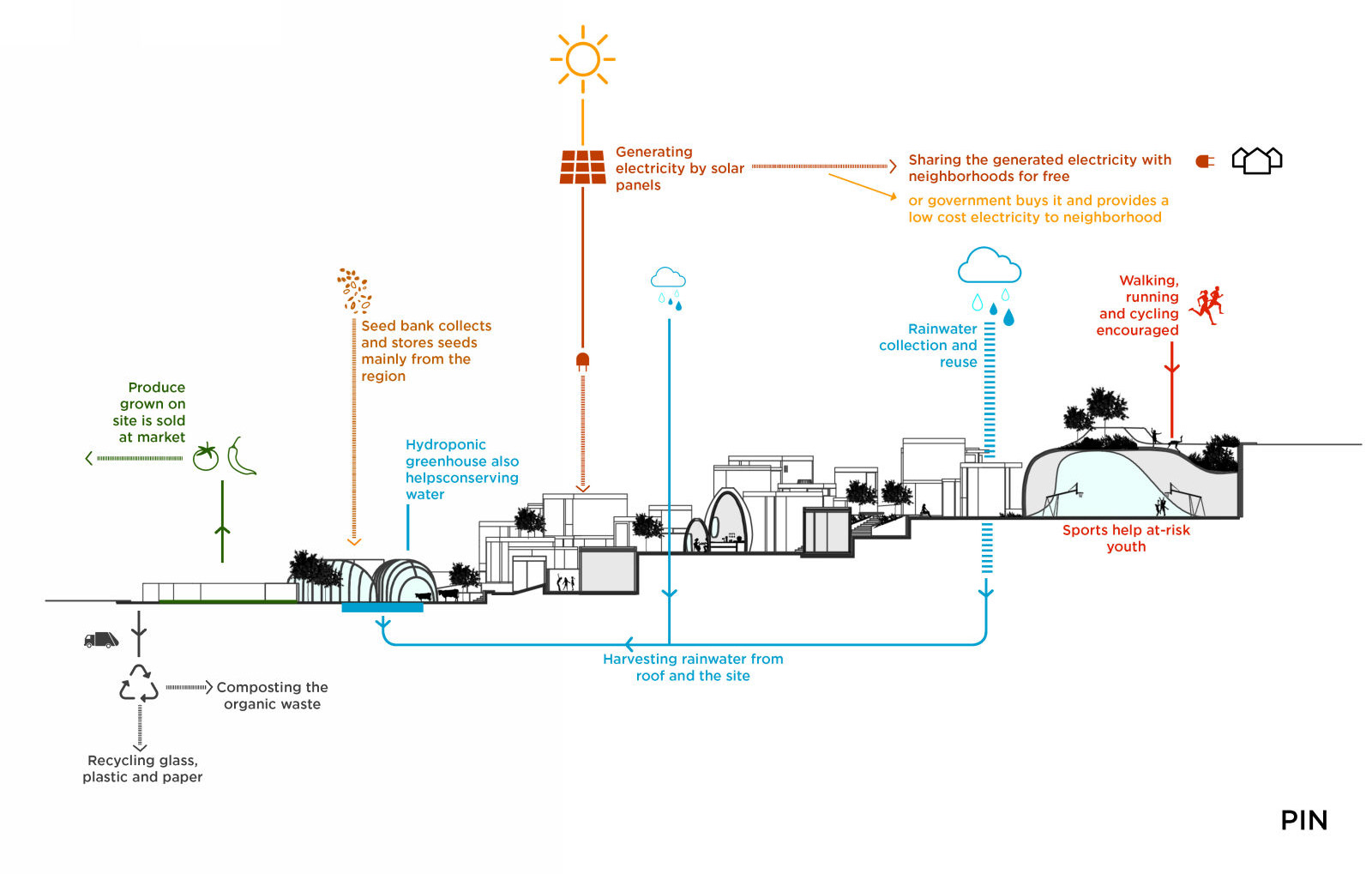KoruMaya is a forward-thinking, active and inclusive example of social architecture reminiscent of tribal village, the Greek arena, and the Roman piazza. Michael Murphy in his TED Talk “Architecture That’s Built to Heals” speaks of architecture with a role to play for the people it addresses to:
“Why was it that the best architecture–all beautiful and visionary and innovative–is also so rare, and seems to serve so very few? And more to the point. With all this creative talent what more could we do?”
Salih Küçüktuna & Mert Sezer / PIN Architects share a similar vision:
“The governor is working hard in Urfa to fight back child abuse, drug abuse, and sectarian violence. KoruMaya, the center will be serving more than two thousand kids. If parents bring in two thousand kids, they will all mix. The architecture itself can help them communicate. It doesn’t lock people in closed places. The site is composed of 40 different buildings. The Pods contain a fireplace in the middle. Our direction was to favor small modules to be built like LEGO, each adjustable to different functions. Maybe it will become a small housing village or a university or morph into social enterprises run by teenagers. Our aim was to build a modular space for the space itself to be appropriated, shared and playful. Sharing is the way we learn in the 21th century. And how amazing would it be to see the tiny architecture matching with nature for farming and life in nature to grow in the heart of the city.”
For the government of the region, KoruMaya is a unique occasion to city planning with active contribution by the people the site will serve most. A free space for social belonging and cohesion through activities, the architecture is designed to ignite people’ provenance, multidisciplinary skills and cultures. Alike the experiences shared by Michael Murphy, architecture for and by the people can come off the ground inclusively with the people it is aimed for.






